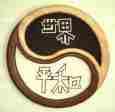Hopi Message of Hope
 Long ago, the Hopi (means People of Peace) were given a plan that would guide them through this time is history. The plan consists of two parallel paths, representing choices that mankind could make. The paths appear very similar, except that the upper path turns into a zigzag that goes nowhere. Those who chose this path will experience this time as great confusion and chaos leading to destruction. The lower path is strong and even. Those choosing this path will grow strong and healthy.
Long ago, the Hopi (means People of Peace) were given a plan that would guide them through this time is history. The plan consists of two parallel paths, representing choices that mankind could make. The paths appear very similar, except that the upper path turns into a zigzag that goes nowhere. Those who chose this path will experience this time as great confusion and chaos leading to destruction. The lower path is strong and even. Those choosing this path will grow strong and healthy.There is a vertical line that connects the two paths, and that until this point is reached, one may move back and forth between the paths. The prophecy tells of a choice point from which there is no return. The prophecy states that "If we hold fast to the sacred way as he (the Creator) devised it for us, what we have gained, we will never lose. But still, we have to choose between the two ways. . .when earthquakes, floods, hailstorms, drought and famine will be the life of every day, the time will have then come for the return to the true path." Hopi prophecy reminds us that the way we live our lives determines which path we follow.
Choose wisely.










